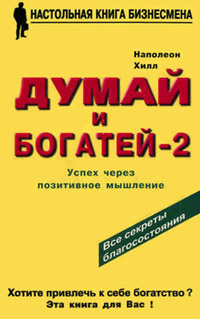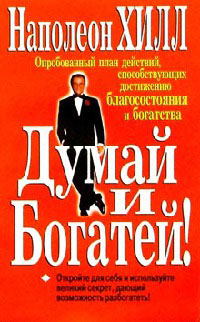Читать книгу "Думай как математик. Как решать любые задачи быстрее и эффективнее - Барбара Оакли"
Шрифт:
Интервал:
Закладка:
Chase, W. G., and H. A. Simon. “Perception in chess.” Cognitive Psychology 4, 1 (1973): 55–81.
Chi, M. T. H., et al. “Categorization and representation of physics problems by experts and novices.” Cognitive Science 5, 2 (1981): 121–152.
Chiesa, A., and A. Serretti. “Mindfulness-based stress reduction for stress management in healthy people: A review and meta-analysis.” Journal of Alternative Complementary Medicine 15, 5 (2009): 593–600.
Cho, S., et al. “Hippocampal-prefrontal engagement and dynamic causal interactions in the maturation of children’s fact retrieval.” Journal of Cognitive Neuroscience 24, 9 (2012): 1849–1866.
Christman, S. D., et al. “Mixed-handed persons are more easily persuaded and are more gullible: Interhemispheric interaction and belief updating.” Laterality 13, 5 (2008): 403–426.
Chu, A., and J. N. Choi. “Rethinking procrastination: Positive effects of ‘active’ procrastination behavior on attitudes and performance.” Journal of Social Psychology 145, 3 (2005): 245–264.
Cook, N. D. Tone of Voice and Mind. Philadelphia: Benjamins, 2002.
Cook, N. D. “Toward a central dogma for psychology.” New Ideas in Psychology 7, 1 (1989): 1–18.
Cooper, G., and J. Sweller. “Effects of schema acquisition and rule automation on mathematical problem-solving transfer.” Journal of Educational Psychology 79, 4 (1987): 347.
Cowan, N. “The magical number 4 in short-term memory: A reconsideration of mental storage capacity.” Behavioral and Brain Sciences 24, 1 (2001): 87–114.
Cree, G. S., and K. McRae. “Analyzing the factors underlying the structure and computation of the meaning of chipmunk, cherry, chisel, cheese, and cello (and many other such concrete nouns).” Journal of Experimental Psychology: General 132, 2 (2003): 163–200.
Dali, S. Fifty Secrets of Magic Craftsmanship. New York: Dover, 1948 (reprint 1992).
DeFelipe, J. “Brain plasticity and mental processes: Cajal again.” Nature Reviews Neuro science 7, 10 (2006): 811–817.
DeFelipe, J. Cajal’s Butterflies of the Soul: Science and Art. New York: Oxford University Press, 2010.
DeFelipe, J. “Sesquicentenary of the birthday of Santiago Ramón y Cajal, the father of modern neuroscience.” Trends in Neurosciences 25, 9 (2002): 481–484.
Demaree, H., et al. “Brain lateralization of emotional processing: Historical roots and a future incorporating ‘dominance.’” Behavioral and Cognitive Neuroscience Reviews 4, 1 (2005): 3–20.
Derman, E. Models. Behaving. Badly. New York: Free Press, 2011.
Deslauriers, L., et al. “Improved learning in a large-enrollment physics class.” Science 332, 6031 (2011): 862–864.
Dijksterhuis, A., et al. “On making the right choice: The deliberation-without-attention effect.” Science 311, 5763 (2006): 1005–1007.
Drew, C. “Why science majors change their minds (it’s just so darn hard).” New York Times, November 4, 2011.
Duckworth, A. L., and ME Seligman. “Self-discipline outdoes IQ in predicting academic performance of adolescents.” Psychological Science 16, 12 (2005): 939–944.
Dudai, Y. “The neurobiology of consolidations, or, how stable is the engram?” Annual Review of Psychology 55 (2004): 51–86.
Duke, R. A., et al. “It’s not how much; it’s how: Characteristics of practice behavior and retention of performance skills.” Journal of Research in Music Education 56, 4 (2009): 310–321.
Dunlosky, J., et al. “Improving students’ learning with effective learning techniques: Promising directions from cognitive and educational psychology.” Psychological Science in the Public Interest 14, 1 (2013): 4–58.
Dunning, D., et al. “Why people fail to recognize their own incompetence.” Current Directions in Psychological Science 12, 3 (2003): 83–87.
Edelman, S. Change Your Thinking with CBT. New York: Ebury, 2012.
Efron, R. The Decline and Fall of Hemispheric Specialization. Hillsdale, NJ: Erlbaum, 1990.
Ehrlinger, J., et al. “Why the unskilled are unaware: Further explorations of (absent) self-insight among the incompetent.” Organizational Behavior and Human Decision Processes 105, 1 (2008): 98–121.
Eisenberger, R. “Learned industriousness.” Psychological Review 99, 2 (1992): 248.
Ellenbogen, J. M., et al. “Human relational memory requires time and sleep.” PNAS 104, 18 (2007): 7723–7728.
Ellis, A. P., et al. “Team learning: Collectively connecting the dots.” Journal of Applied Psychology 88, 5 (2003): 821.
Elo, A. E. The Rating of Chessplayers, Past and Present. London: Batsford, 1978.
Emsley, J. The Elements of Murder. New York: Oxford University Press, 2005.
Ericsson, K. A. Development of Professional Expertise. New York: Cambridge University Press, 2009.
Ericsson, K. A., et al. “The making of an expert.” Harvard Business Review 85, 7/8 (2007): 114.
Erlacher, D., and M. Schredl. “Practicing a motor task in a lucid dream enhances subsequent performance: A pilot study.” The Sport Psychologist 24, 2 (2010): 157–167.
Fauconnier, G., and M. Turner. The Way We Think. New York: Basic Books, 2002.
Felder, R. M. “Memo to students who have been disappointed with their test grades.” Chemical Engineering Education 33, 2 (1999): 136–137.
Felder, R. M. “Impostors everywhere.” Chemical Engineering Education 22, 4 (1988): 168–169.
Felder, R. M., et al. “A longitudinal study of engineering student performance and retention. V. Comparisons with traditionally-taught students.” Journal of Engineering Education 87, 4 (1998): 469–480.
Fields, R. D. “White matter in learning, cognition and psychiatric disorders.” Trends in Neurosciences 31, 7 (2008): 361–370.
Fischer, K. W., and T. R. Bidell. “Dynamic development of action, thought, and emotion.” In Theoretical Models of Human Development: Handbook of Child Psychology, edited by W. Damon and R. M. Lerner. New York: Wiley, 2006: 313–399.
Foerde, K., et al. “Modulation of competing memory systems by distraction.” Proceedings of the National Academy of the Sciences 103, 31 (2006): 11778–11783.
Gabora, L., and A. Ranjan. “How insight emerges in a distributed, content-addressable memory.” In Neuroscience of Creativity, edited by O. Vartanian et al. Cambridge, MA: MIT Press, 2013: 19–43.
Gainotti, G. “Unconscious processing of emotions and the right hemisphere.” Neuropsychologia 50, 2 (2012): 205–218.
Gazzaniga, M. S. “Cerebral specialization and interhemispheric communication: Does the corpus callosum enable the human condition?” Brain 123, 7 (2000): 1293–1326.
Gazzaniga, M. S., et al. “Collaboration between the hemispheres of a callosotomy patient: Emerging right hemisphere speech and the left hemisphere interpreter.” Brain 119, 4 (1996): 1255–1262.
Внимание!
Сайт сохраняет куки вашего браузера. Вы сможете в любой момент сделать закладку и продолжить прочтение книги «Думай как математик. Как решать любые задачи быстрее и эффективнее - Барбара Оакли», после закрытия браузера.




